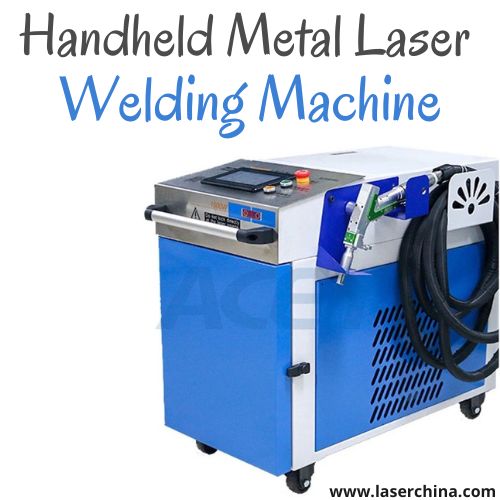
When working on metal fabrication or repair projects, especially in environments with limited space or complex angles, traditional welding methods can struggle to deliver the required precision and control. This is where the handheld metal laser welding machine comes into play, offering a transformative solution that redefines how welding is performed in tight and challenging spaces.
A handheld metal laser welding machine leverages advanced laser technology to produce concentrated heat, enabling highly controlled and precise welds on various metals. Unlike conventional welding, which often requires large, bulky equipment and significant manual dexterity, this portable device offers unmatched flexibility and accuracy, making it a preferred tool in industries such as automotive repair, aerospace, jewelry making, and even on-site industrial maintenance.
Understanding the Core Functionality
At its core, a handheld metal laser welding machine focuses a high-energy laser beam onto the targeted metal surface, melting the material in a localized area to form a weld. The laser’s precision allows for minimal heat distortion in surrounding areas, preserving the integrity of the metal while ensuring a strong bond.
This precision is crucial when dealing with tight spots, intricate joints, or delicate components where conventional welding torches would be too large or cause excessive heat damage. The handheld nature of the machine further enhances this capability by providing the welder with mobility and ease of maneuvering, allowing them to access otherwise hard-to-reach areas.
Practical Applications in Tight Spaces
One of the biggest challenges in welding is performing quality welds in confined or irregular spaces. These spaces often restrict the use of traditional welding setups due to size constraints or limited visibility. The handheld metal laser welding machine excels here because it is lightweight and ergonomically designed, allowing operators to easily position the tool and maintain control over the weld seam.
For example, in automotive repair shops, technicians frequently need to weld metal panels or components buried deep within an engine bay or vehicle frame. The compact size and precision of a handheld laser welding machine allow for rapid and accurate repairs without dismantling large sections, saving both time and cost.
In the aerospace industry, where components are often complex and tightly packed, this welding technology enables technicians to perform precise repairs and assembly tasks on critical parts. This ensures safety and reliability while maintaining strict tolerances essential to aircraft performance.
Material Compatibility and Versatility
Handheld metal laser welding machines are versatile in terms of the metals they can weld. They can handle stainless steel, carbon steel, aluminum, copper, brass, and even exotic alloys with ease. The laser parameters can be adjusted to suit the specific material type and thickness, ensuring optimal fusion without causing structural damage or excessive warping.
This adaptability is particularly important in fields like jewelry making or electronics, where small, intricate metal parts require delicate yet robust welding. The ability to control the heat input precisely helps preserve the aesthetics and functionality of these delicate components.
Enhancing Workflow Efficiency
The agility offered by handheld metal laser welding machines significantly impacts the efficiency of the welding workflow. Operators no longer need to reposition bulky machines or struggle with limited angles. Instead, they can directly approach the welding point with the handheld device, speeding up the process.
Furthermore, the precise nature of the laser weld reduces the need for extensive post-weld cleanup or grinding, which often accompanies traditional welding. This streamlined approach translates to higher productivity and faster project completion times.
Safety Considerations
Although handheld metal laser welding machines involve high-intensity laser beams, modern designs incorporate multiple safety mechanisms. Operators typically wear protective eyewear designed to filter the specific laser wavelength. The focused nature of the laser also means that stray sparks and fumes are minimized compared to traditional welding arcs, reducing certain workplace hazards.
Additionally, the reduced heat input means lower risk of accidental burns or fire hazards in tight or flammable environments, making it safer for confined space operations.
Investment and Long-Term Value
Investing in a handheld metal laser welding machine may initially appear costly, but the long-term value it delivers is compelling. Its durability, precision, and versatility reduce material waste and rework, directly impacting overall project costs.
Moreover, the machine’s portability means it can be deployed across multiple job sites or workshops without the need for extensive setup, maximizing its utility. For companies that prioritize high-quality finishes and precision work, this tool offers a distinct competitive advantage.
Training and Skill Development
Operating a handheld metal laser welding machine requires a certain level of training and expertise. Welders must understand laser safety protocols and how to adjust the machine settings based on the metal type and thickness.
However, once trained, operators often find the learning curve less steep than mastering complex traditional welding techniques. The immediate feedback and control offered by the laser weld process encourage skill improvement and consistent results.
Final Thoughts
The handheld metal laser welding machine has revolutionized how welding professionals approach precision tasks, especially in tight or difficult-to-access spaces. Its combination of portability, precision, and versatility creates new possibilities in metalworking, enabling operators to execute high-quality welds where traditional methods might falter. For anyone involved in metal fabrication, repair, or assembly, incorporating this technology into their toolkit offers enhanced control, efficiency, and long-term value, ultimately raising the standard of craftsmanship and project success.




